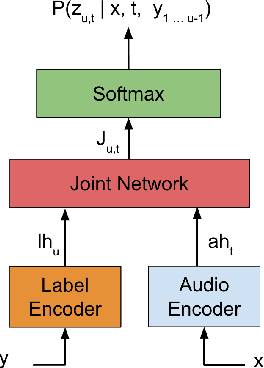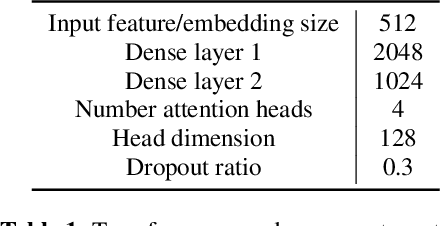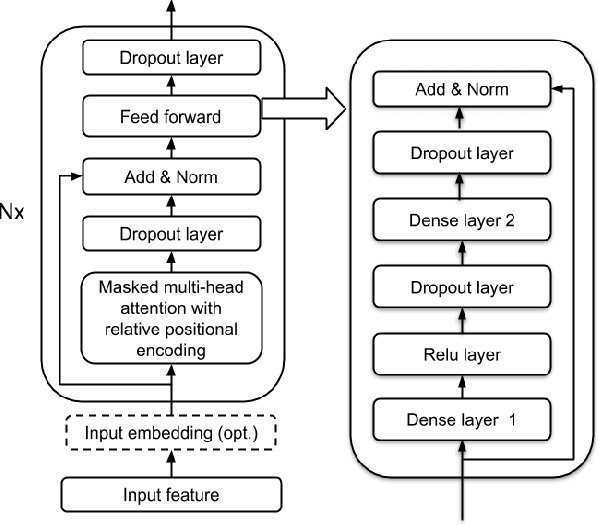Transformer Transducer: A Streamable Speech Recognition Model with Transformer Encoders and RNN-T Loss
Paper and Code
Feb 14, 2020



In this paper we present an end-to-end speech recognition model with Transformer encoders that can be used in a streaming speech recognition system. Transformer computation blocks based on self-attention are used to encode both audio and label sequences independently. The activations from both audio and label encoders are combined with a feed-forward layer to compute a probability distribution over the label space for every combination of acoustic frame position and label history. This is similar to the Recurrent Neural Network Transducer (RNN-T) model, which uses RNNs for information encoding instead of Transformer encoders. The model is trained with the RNN-T loss well-suited to streaming decoding. We present results on the LibriSpeech dataset showing that limiting the left context for self-attention in the Transformer layers makes decoding computationally tractable for streaming, with only a slight degradation in accuracy. We also show that the full attention version of our model beats the-state-of-the art accuracy on the LibriSpeech benchmarks. Our results also show that we can bridge the gap between full attention and limited attention versions of our model by attending to a limited number of future frames.
 Add to Chrome
Add to Chrome Add to Firefox
Add to Firefox Add to Edge
Add to Edge